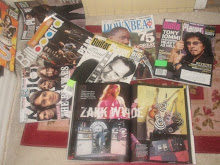When was the last time you visited museum? Most adult working class people will answer ten or few years ago. When did you wander around shopping mall for the last time? Perhaps, it was just last evening and it has been three times during the week. Yes, shopping malls are urban people’s playground where they spend money and time. A sector of trade, hotel, and restaurant is economic backbone of Surabaya and many other cities. In Surabaya, this sector has grown 8 - 9% during the period of 2001-2005 while manufacturing sector’s growth rate was only about 2- 4.5% in the same period. Its share to Surabaya GDP has surpassed the share of manufacturing sector since 2002.
Here are some data and facts about urban (retail) trade sector I found interesting and they deserve some questions:
1. Mall-Population Ratio. In Singapore, one shopping centre serves 63,000 people. In Malaysia and Thailand, one shopping centre serves 105,000 and 170,000 people, respectively. In Jakarta and Surabaya (Indonesia), one shopping centre serves between 372,000 – 400,000 people. Question: Do Jakarta and Surabaya really need more malls?
2. Spatial Distribution of Mall and Traditional Market. Modern shopping malls make Surabaya appear to be monocentric, while traditional, some wet, markets make Surabaya polycentric. Question: Why?
3. Modern Shopping Centre vs. Traditional Market. In each five sub-regions of Surabaya, there are numbers of modern shopping centre and traditional market. Question: Are the two in head-to-head competition (for income, job creation, service) or are they complementary to each other?
4. Mall’s Commodity Profile. Regarding numbers of tenants (not talking about sales revenue or sales volume), malls are dominated by these following products: fashion and leather goods, foods and beverages, consumer electronics, and optic, watch, and jewelry. Question: Why? Is it supply that follows demand?
Here are some data and facts about urban (retail) trade sector I found interesting and they deserve some questions:
1. Mall-Population Ratio. In Singapore, one shopping centre serves 63,000 people. In Malaysia and Thailand, one shopping centre serves 105,000 and 170,000 people, respectively. In Jakarta and Surabaya (Indonesia), one shopping centre serves between 372,000 – 400,000 people. Question: Do Jakarta and Surabaya really need more malls?
2. Spatial Distribution of Mall and Traditional Market. Modern shopping malls make Surabaya appear to be monocentric, while traditional, some wet, markets make Surabaya polycentric. Question: Why?
3. Modern Shopping Centre vs. Traditional Market. In each five sub-regions of Surabaya, there are numbers of modern shopping centre and traditional market. Question: Are the two in head-to-head competition (for income, job creation, service) or are they complementary to each other?
4. Mall’s Commodity Profile. Regarding numbers of tenants (not talking about sales revenue or sales volume), malls are dominated by these following products: fashion and leather goods, foods and beverages, consumer electronics, and optic, watch, and jewelry. Question: Why? Is it supply that follows demand?

1 comment:
Surabaya really needs more malls.. opss.. actually place to hang out it doesn't mean must be a mall...it could be park, beach etc.. or museum maybe...:D
Post a Comment